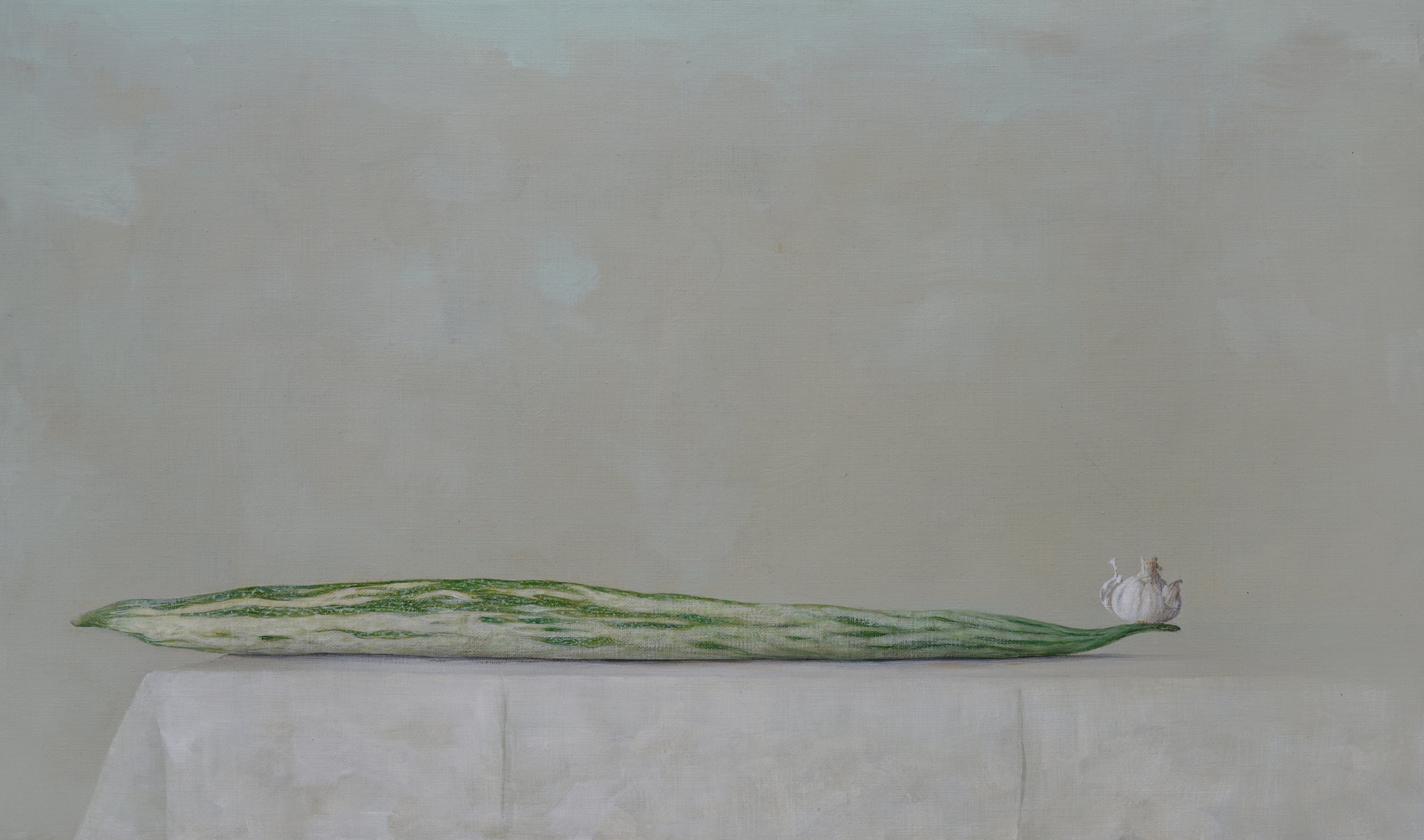Ahmad Zakii Anwar
Sept 6, 2019 - October 15, 2019
Opening reception Friday, September 6, 6-8 pm.
Essay by Beth Citron, Curator of Modern and Contemporary Art, Rubin Museum of Art
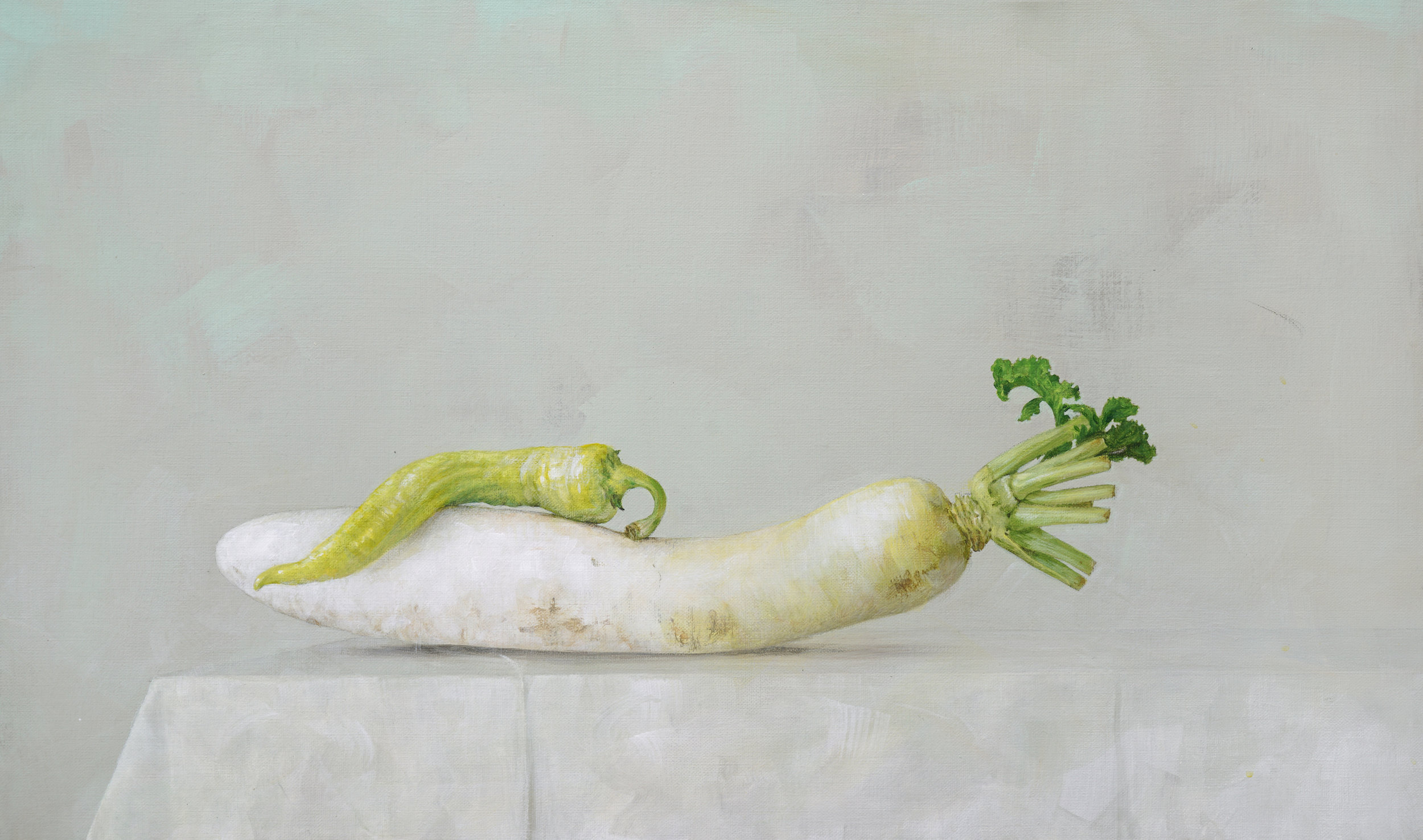
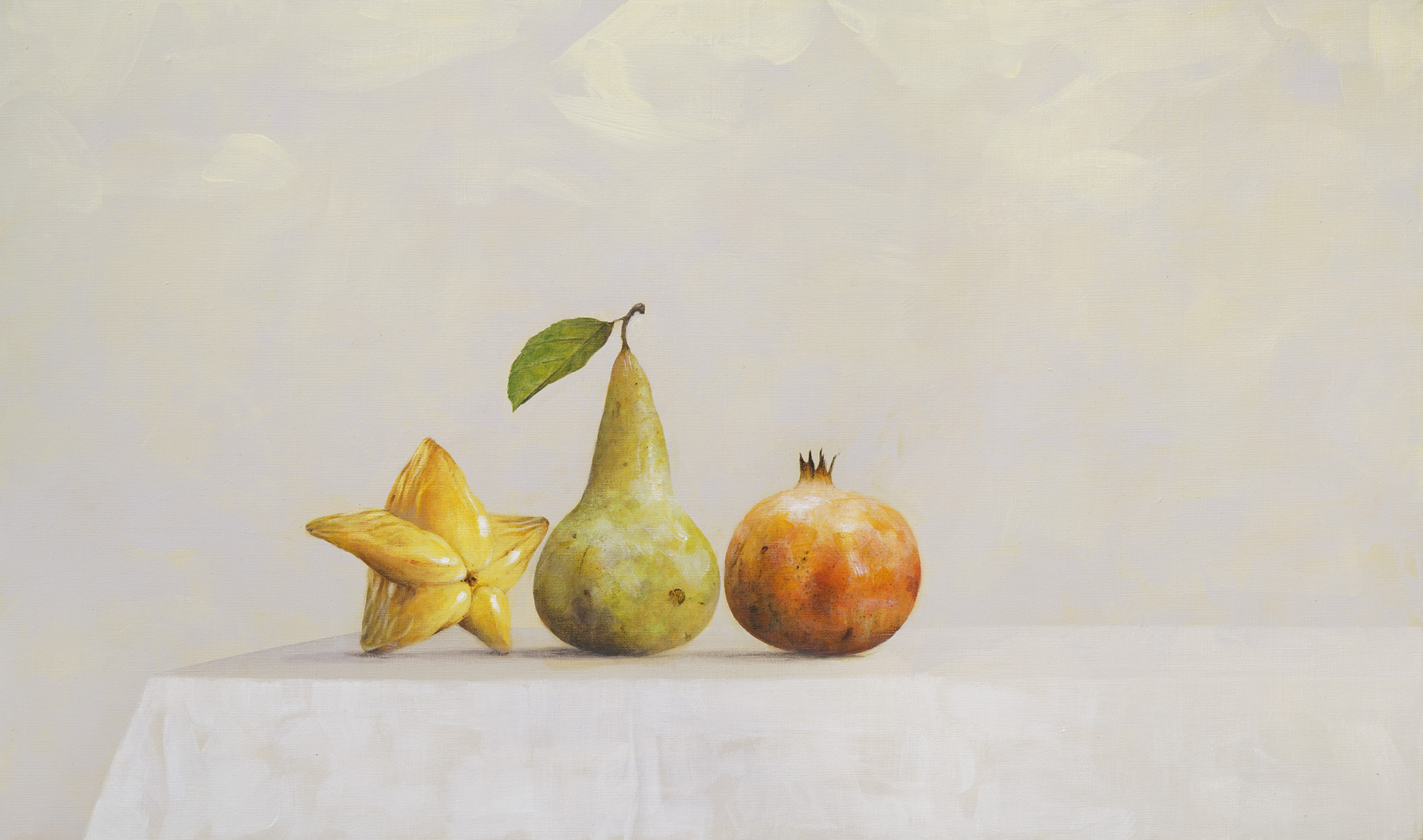
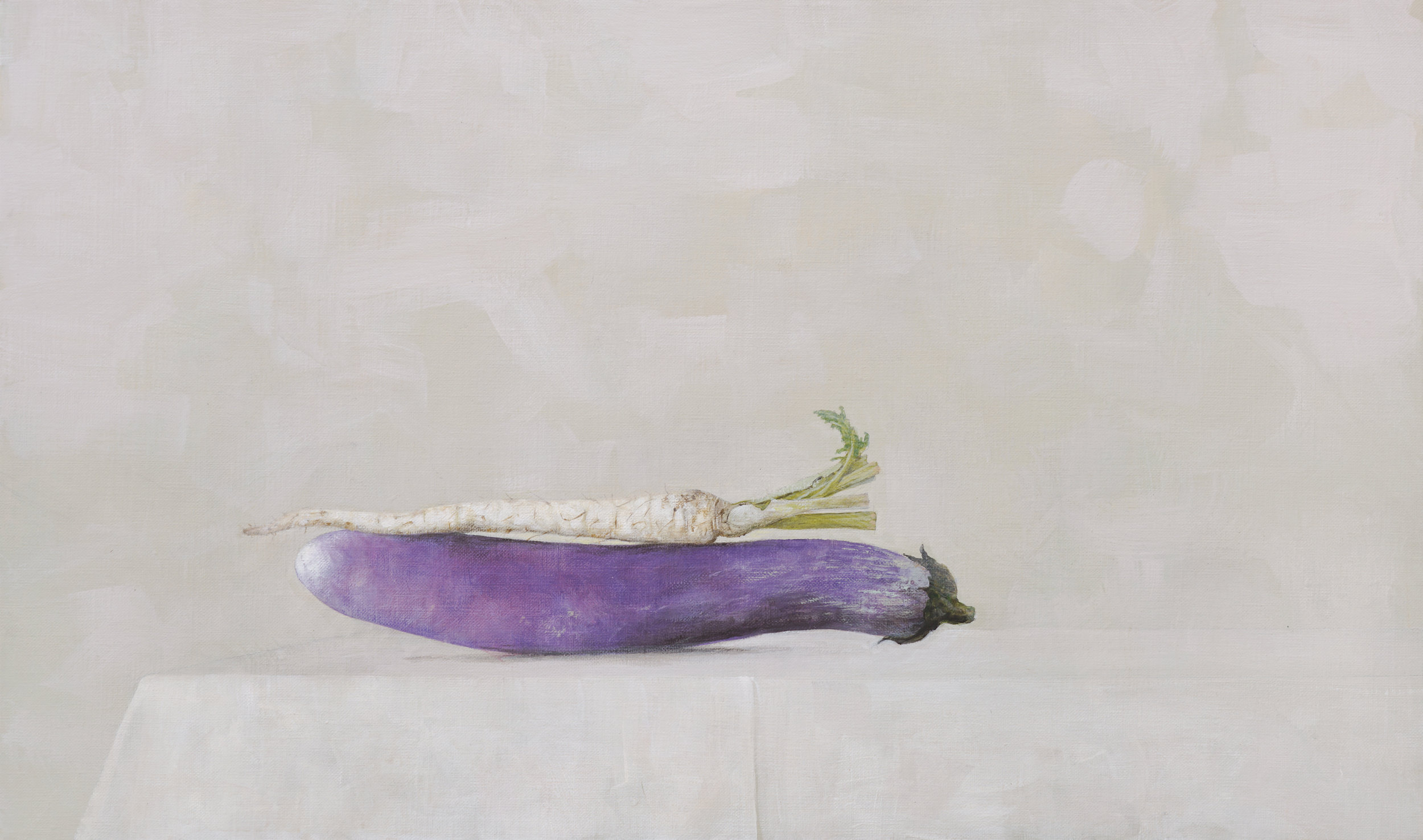
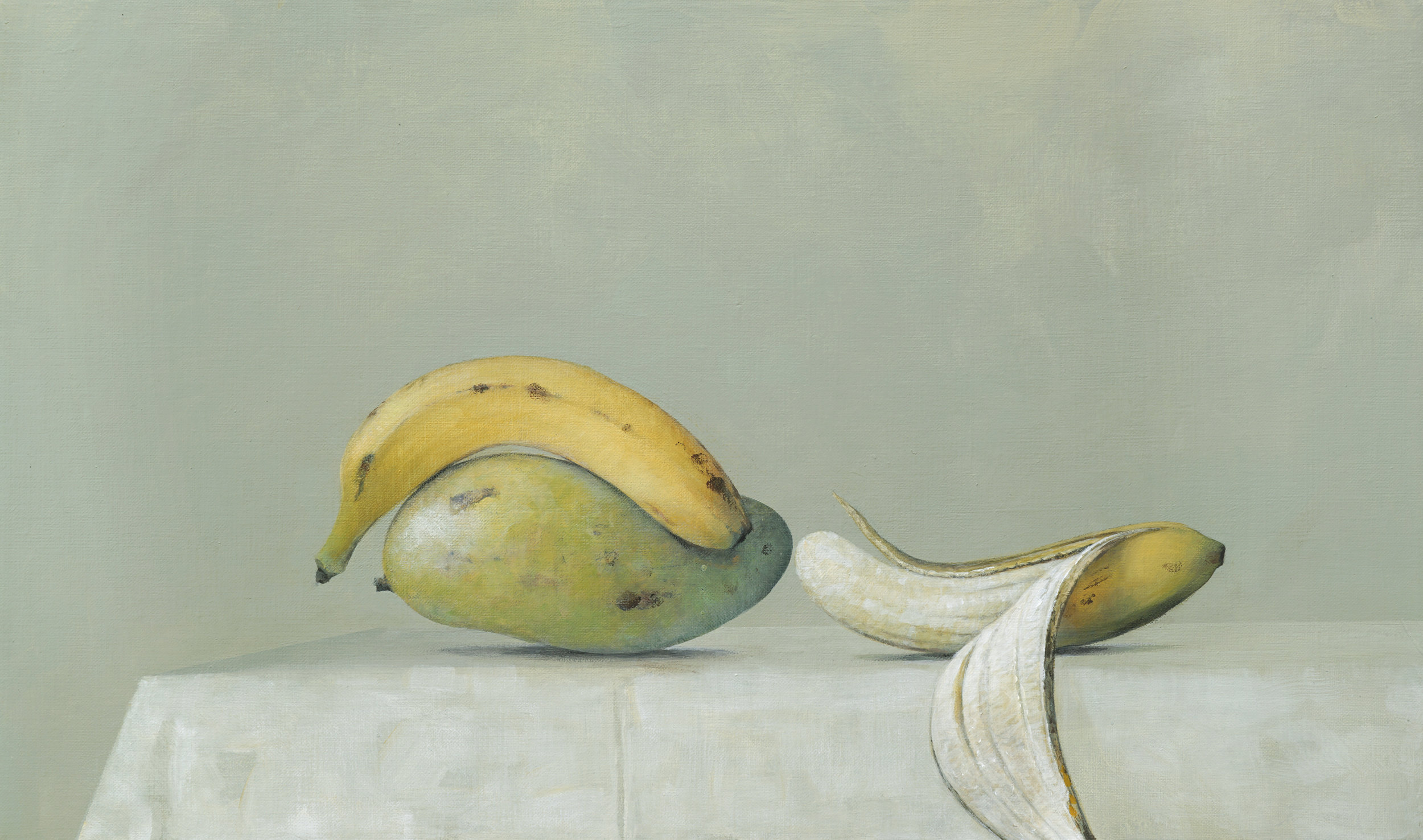

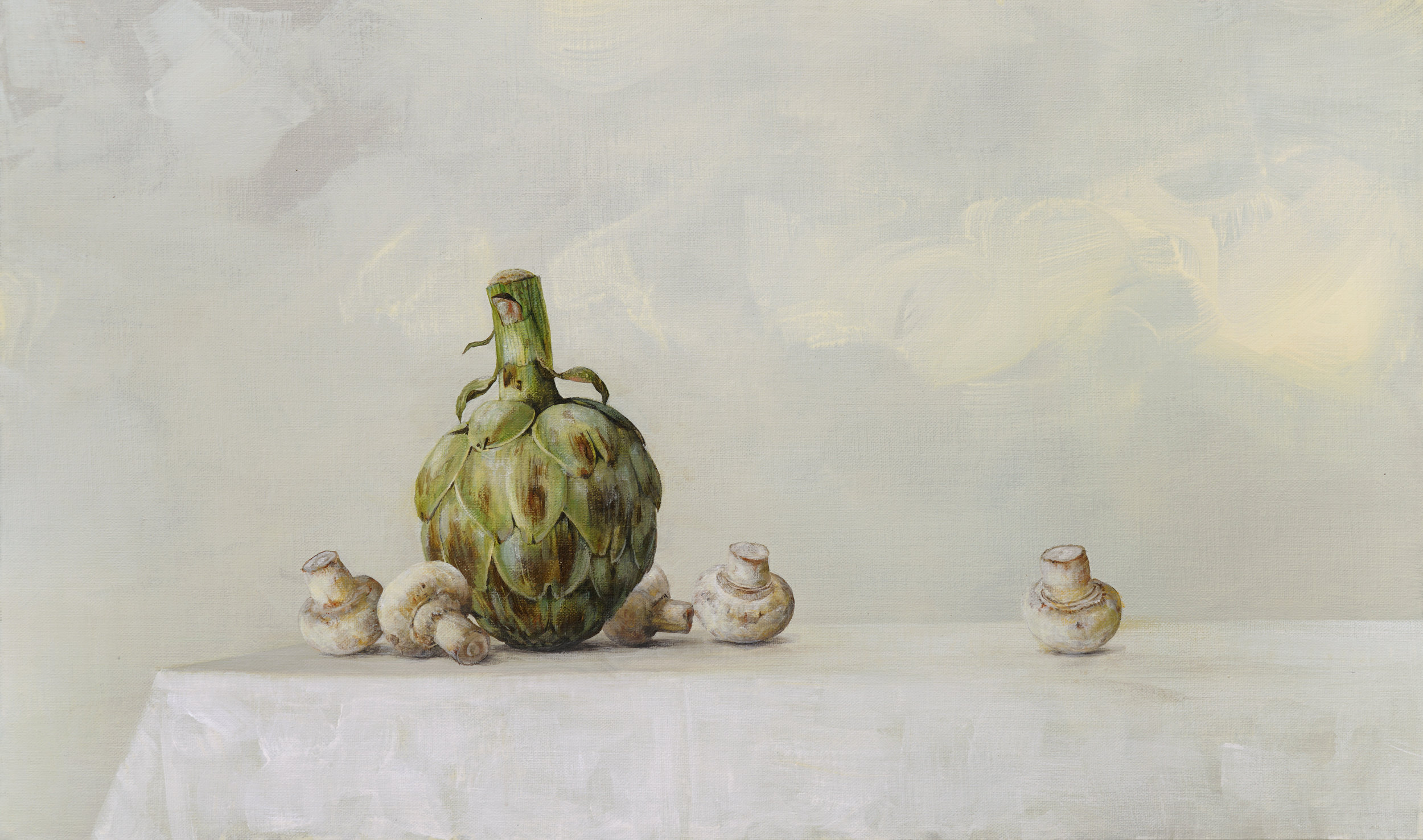
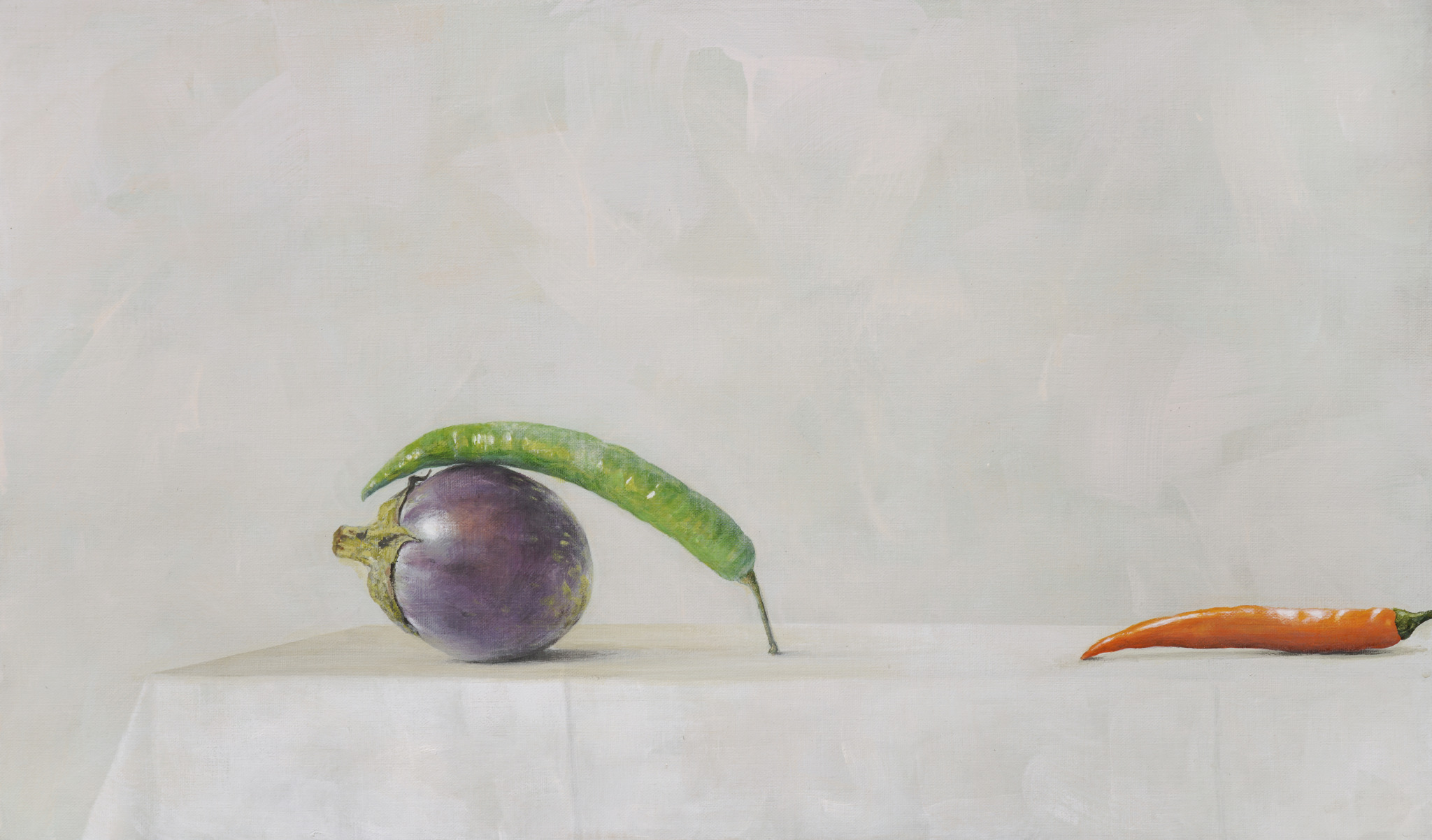
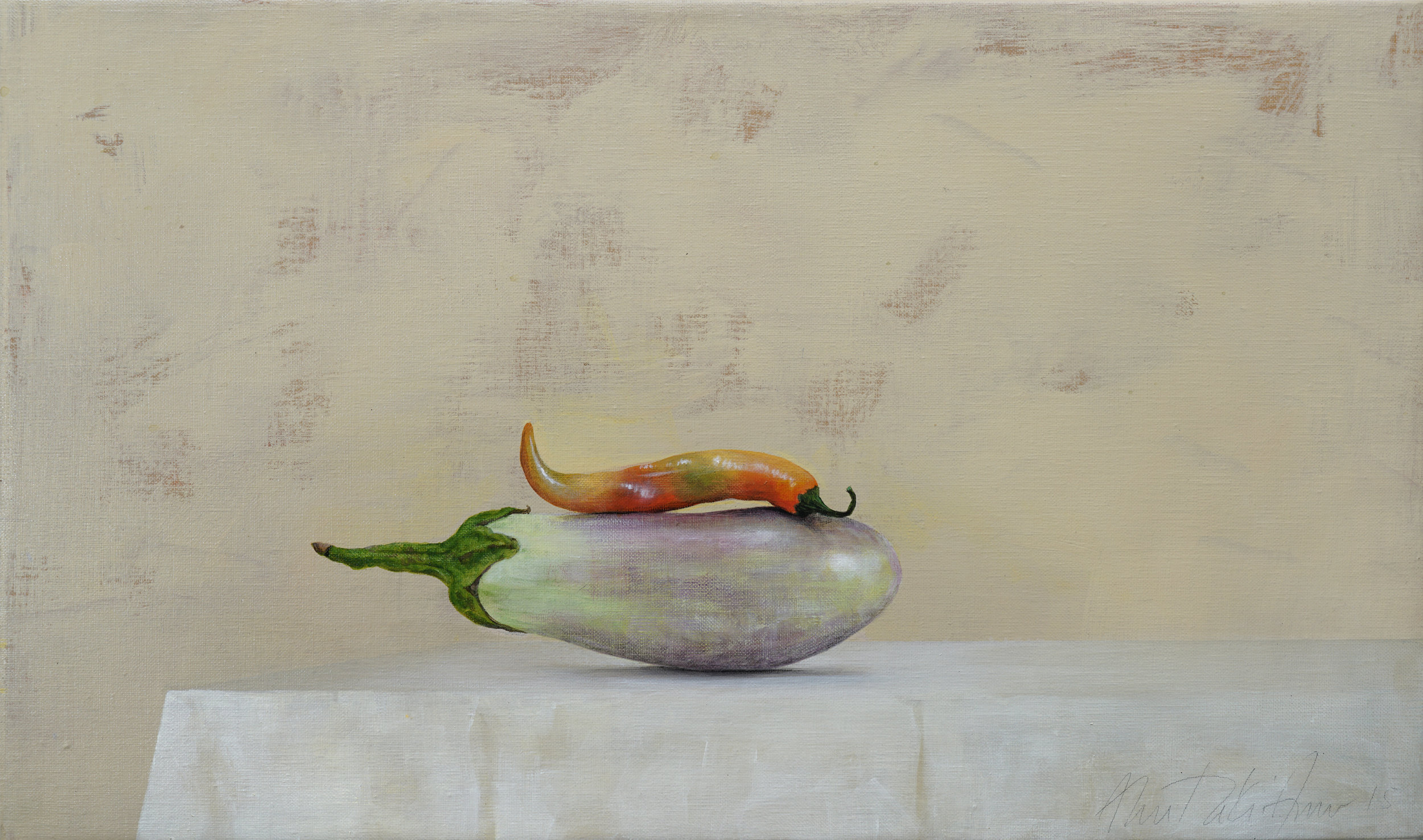
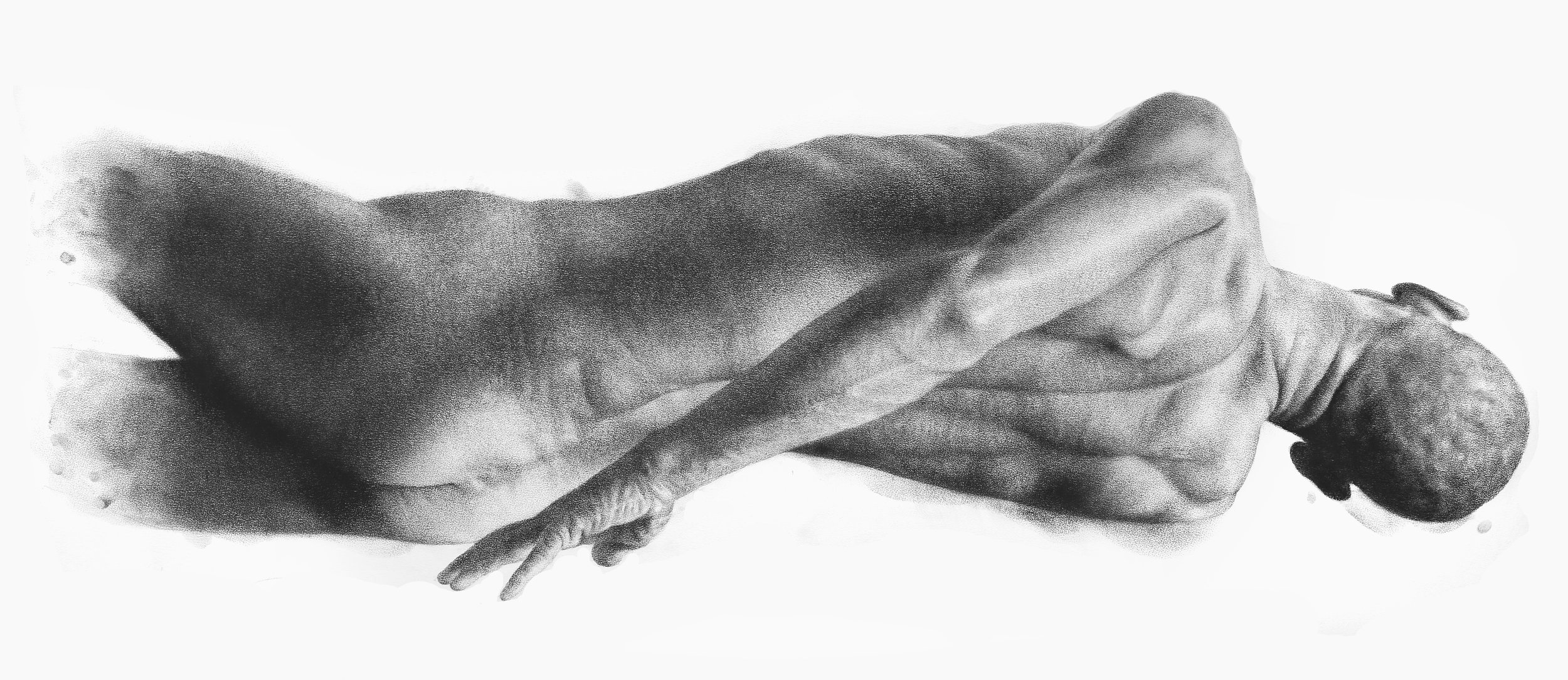

Sapar Contemporary is proud to present Lust for Life, an exhibition by the contemporary Malaysian master, Ahmad Zakii Anwar (b. 1955, Johor Bahru, Malaysia).
The work of Ahmad Zakii Anwar (Zakii) hinges on series of figures and still life -- art historical forms that are both classical and universal, but re-conceived critically and defiantly with innovations that are personal and innovative to Zakii’s practice. This exhibition, Lust for Life,centers on a group of his finely detailed individual charcoal male nudes absent of any background, and an extended set of fruits and vegetables set in relation to each other on painterly, emptied surfaces.
Working initially from live figures, but then privately in his studio from images of those models, Zakii draws sinewed, singular male nudes, partially disembodying them as thighs dissolve into backgrounds and decapitated figures float in white space. When heads do appear, faces are arched away from the viewer, retaining a certain abstraction and anonymity. While referencing the physicality of real models, these nudes appear sculptural and stilled. The human body seems to approach an ideal statuesque, even as some of the figures’ poses are intentionally unnatural or even uncomfortable, for example in Reclining Figure 15, in which a shoulder hyper extends as an arm stretches far behind the body.
Rendered in charcoal on paper, these works give the initial perception of refined and formally complete studies. Each of the bodies in Reclining Figure 14 (2015), Reclining Figure 15 (2015), and Triplicity(2019) is between frontal and dorsal and reveals some torsion that deliberately obscures any genitalia. Zakii’s choice to fragment and decontextualize these figures further serves to neuter them, with missing or hidden limbs reinforcing the notable absence of a phallus across multiple works. In this way, the artist’s charcoals present an edited form of the male nude that at once reflects and challenges an archetypal perfection – staging an encounter that is unusual, disarming, and more nuanced than first impressions suggest.
As Zakii considers all of his work autobiographical (not just the figural dimension of his practice), the male gaze on each of these figures can be read as reflective rather than social, personal instead of voyeuristic. These works speak to an isolation from relationship and even from ourselves, reinforced through each absent face, limb, and organ. Through these missing elements that anonymize and desexualize, Zakii’s choice to work through nude figures is effectively depoliticized, even in the context of a historically conservative cultural sphere steered in part by Islam as the prevailing religion in Malaysia.
Rendered in acrylic on linen, Zakii’s fruits and vegetables adhere on the surface to art historical conventions of still life, to literal nature morte; but by contrast to the expectations of this genre and his nude figures, this series of works appear playful, provocative, and are held in a state of animated suspense. These paintings – individually and as a larger group -- are about contact and communication, revealing the tension of two or more distinct bodies of varied size, texture, taste, and color coming together. In this way, unexpectedly perhaps, these works take on a sensual, sexualized charge that the nudes resist, in part but not only through the phallic impression of certain elements.
In the case of Apple & Banana (2019), there is peel-on-peel entanglement, making the erotic implications of the series seem that much more explicit. This work is one of only two in the series showing a stylized alteration to the skin of a fruit (the other is a more simply peeled banana), revealing the mediation of a human hand in the construction of a relationship between two species. This intervention on inanimate objects reflects the artist’s thinking behind his compositions, as well as the presence of his hand before acrylic meets paper, fortifying Zakii’s sense that he is reflected throughout his work.
The selection of fruits and vegetables suggests an intentionally generic range, mostly without reference to the more ‘exotic’ species of Malaysia and Southeast Asia (except, maybe, for a single busty starfruit standing alongside a pear and pomegranate). Notably, all of the produce represented is in seemingly flawless and ripe condition. And yet each fruit and vegetable is entirely self-contained without any juice or flesh seeping beyond skin, challenging the easy erotic connotations of several paintings. In this way, carrots, lemons, eggplants, mangoes, and the like become analogous to the controlled and restrained beauty standard suggested by the sculpted bodies of Zakii’s nudes, even where the relationships between these objects are more suggestive.
It may seem somehow paradoxical that Zakii regards his practice as autobiographical but privileges universal modes and iconography. But his choices within these genres, as well as how the two bodies of work in Lust for Life speak to each other, reveal much about his aesthetics and a larger sense of self. Study of Zakii’s nudes alongside his still life paintings suggests an interplay of isolation and relationship, of desire and repression, even the contrast between a life lived in charcoal against one expressed in full range of color. At the same time, reaching across the work in this exhibition is a pervasive agelessness and bow towards immortality through perfection: skin and bodies reveal no fat and barely a wrinkle, and even the peeled flesh in Apple & Banana hasn’t oxidized or browned at all (but more perversely, we imagine, it will be eaten).
This suggestion of a living eternity through the iconography in Zakii’s work mirrors the way in which he rejects markers that would situate it in present or past. Art historically, the works in Lust for Life also suggest a timelessness through their relationship to lasting genres of figurative and still life painting. Within Malaysia, where Zakii is revered by younger generations of artists, the artist’s choice to explore the figure has quietly subverted convention, as the country’s art scene has historically favored abstraction. Thus, the artist finds himself subtly breaking ground at home, and flirting with a canon stretching from Michelangelo to Morandi within a centuries long global context.
- Beth Citron
Ahmad Zakii Anwar (b. 1955, Johor Bahru, Malaysia), also known as Zakii, is one of the best known artists in Malaysia. His art is lauded for capturing not only city motifs but also the distinctive psychological dimensions and cinematic quality of these settings. Zakii’s preoccupation with the spiritual or metaphysical aspects of urban life is revealed through his use of icons, symbols and allegories. Metaphors of theatre, performance, and masks have also marked his practice. All of Zakii’s work, from his Michelangelesque male nudes to his photorealistic animals and sensual fruits are steeped in contemplative silence drawn from his research in both Platonic simulacra and Sufi mysticism. Zakii’s large-scale charcoal drawings of male nudes, evoking, in two-dimensions, a visceral reality reminiscent of Michelangelo’s slave sculptures, Zakii’s drawings combine his theological, psychological and cosmological inquiries of the human spirit and body.
Zakii holds a degree from the School of Art and Design, MARA Institute of Technology Malaysia.He is an important figure of the Malaysian and South East Asian art scene, where he exhibits in Kuala Lumpur, Singapore, Jakarta, Bangkok and Manila. Internationally, Zakii has exhibited in New York, London, Paris, Los Angeles, Seoul, Shanghai, and Hong Kong. His artwork can be found in many institutional collections including National Art Gallery Kuala Lumpur, Bank Negara Malaysia, Khazanah Nasianal Berhad, Singapore Art Museum, National University of Singapore Museum and Long Museum Shanghai among others. The artist also maintains an activist practice supporting AIDS patients, women’s rights and his local community.
Beth Citron is the Curator of Modern and Contemporary Art at the Rubin Museum of Art. Her exhibitions for the Rubin Museum have included A Lost Future: Shezad Dawood / The Otolith Group / Matti Braun (2018), Chitra Ganesh (2018), Henri Cartier-Bresson: India in Full Frame (2017), Genesis Breyer P-Orridge: Try to Altar Everything (2016), Francesco Clemente: Inspired by India (2014), Witness at a Crossroads: Photographer Marc Riboud in Asia (2014), and the three-part exhibition series Modernist Art from India (2011–13). She completed a PhD in the history of art at the University of Pennsylvania in 2009, where her dissertation focused on art in Bombay from 1965-1995. Her research has been supported by Fulbright and FLAS fellowships. She has taught in the Art History Department at New York University, from which she also earned a BA in fine arts.

